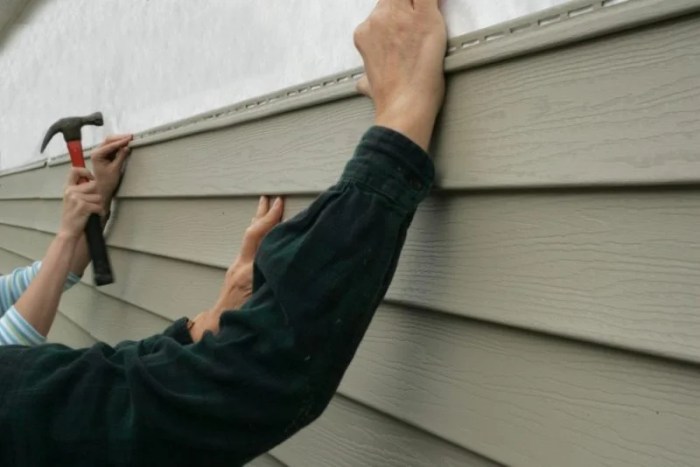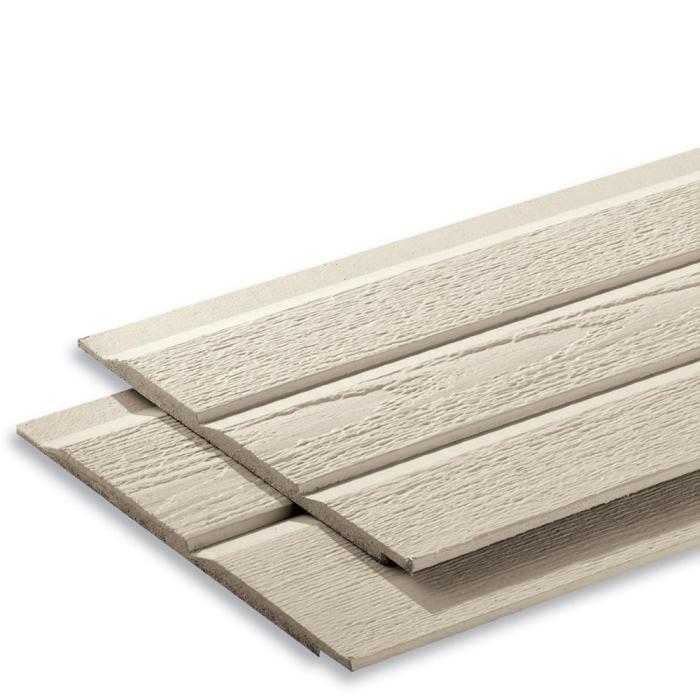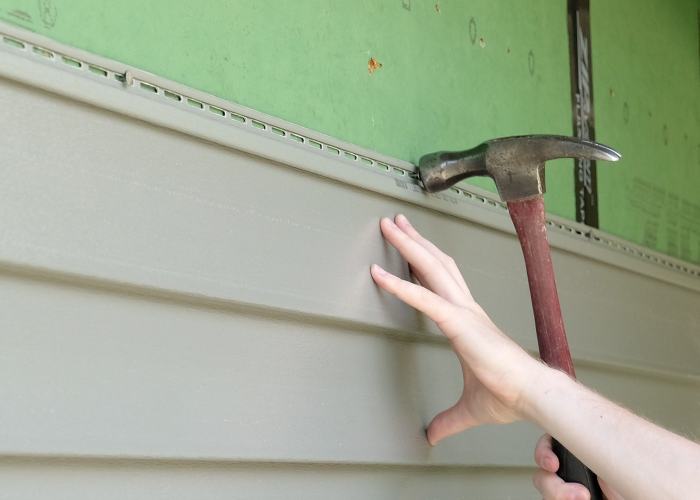Home Depot siding installation offers a convenient option for homeowners looking to upgrade their exterior. This guide delves into the costs, process, material choices, and customer experiences associated with Home Depot’s siding services, helping you make an informed decision. We’ll explore everything from pricing breakdowns and potential hidden costs to comparing Home Depot’s offerings with independent contractors. Understanding the pros and cons of each material, like vinyl, wood, and fiber cement, is crucial, and we’ll provide insights into that as well, along with analyzing real customer reviews to paint a complete picture.
From initial consultation to final cleanup, we’ll walk you through the step-by-step process, highlighting quality control measures and offering tips to navigate the entire experience smoothly. We’ll also address common concerns and questions, equipping you with the knowledge to confidently choose the best siding installation solution for your home.
Home Depot Siding Installation Pricing
Home Depot offers siding installation services, but pricing varies significantly depending on several key factors. Understanding these factors is crucial for accurate budgeting and realistic expectations. This section details the typical cost breakdown, including potential hidden expenses, to help you navigate the process effectively.
Several variables influence the final cost of your Home Depot siding installation. These include the type of siding chosen, the square footage of your home’s exterior, the complexity of the job (e.g., existing siding removal, intricate trim work), and regional labor rates. Home Depot often provides estimates based on these factors, but it’s essential to remember that these are estimates, and the final cost could differ.
Home Depot Siding Installation Cost Breakdown
The total cost of a siding installation project at Home Depot is typically comprised of material costs and labor costs. Material costs depend heavily on the type of siding selected, with vinyl being generally the most affordable and fiber cement or wood siding being significantly more expensive. Labor costs are influenced by the size and complexity of the project; a larger house with intricate architectural details will naturally require more labor hours. Additionally, regional variations in labor rates play a significant role.
Examples of Home Depot Siding Installation Pricing
The following table provides examples of potential pricing structures, acknowledging that actual costs can vary based on location and project specifics. These figures are illustrative and should not be considered definitive quotes. Always obtain a personalized estimate from Home Depot for your specific project.
| Siding Type | Square Footage | Labor Cost | Total Cost |
|---|---|---|---|
| Vinyl Siding | 1500 sq ft | $4,500 – $7,500 | $7,000 – $12,000 |
| Fiber Cement Siding | 1500 sq ft | $7,000 – $12,000 | $15,000 – $25,000 |
| Wood Siding | 1500 sq ft | $10,000 – $18,000 | $20,000 – $35,000 |
| Engineered Wood Siding | 1500 sq ft | $8,000 – $15,000 | $15,000 – $28,000 |
| Aluminum Siding | 1500 sq ft | $5,000 – $9,000 | $8,000 – $14,000 |
Potential Hidden Costs in Home Depot Siding Installation
Beyond the initial estimate, several additional costs might arise during the siding installation process. These hidden costs can significantly impact the overall budget. Careful planning and upfront communication with Home Depot are crucial to mitigate these potential surprises.
Permitting fees are often overlooked but are a necessary expense for most siding projects. These fees vary by location and the scope of the work. Waste removal is another frequently underestimated cost. Proper disposal of old siding and construction debris is essential and adds to the overall project expense. Unforeseen repairs, such as rotted wood or damaged sheathing discovered during the installation process, can also add unexpected costs. Finally, potential issues like changes in scope or material price fluctuations can also contribute to cost overruns.
Home Depot Siding Installation Process

The Home Depot siding installation process is designed to provide homeowners with a seamless experience, from initial consultation to project completion. The process typically involves several key stages, each carefully managed to ensure quality workmanship and customer satisfaction. While specific details may vary depending on the project’s scope and complexity, the general framework remains consistent.
The process begins with a thorough consultation to assess the customer’s needs and preferences. This includes discussing siding materials, colors, and styles, as well as reviewing the project’s scope and timeline. A detailed estimate is then provided, outlining all associated costs. Once the customer approves the estimate and selects the materials, the installation process commences.
Project Preparation and Measurement
Before any siding is installed, the project site undergoes meticulous preparation. This includes removing existing siding (if applicable), repairing any underlying damage to the house’s exterior, and ensuring the surface is clean and properly prepared for the new siding. Accurate measurements are crucial for ordering the correct amount of siding and ensuring a precise fit. Any discrepancies or unexpected issues are addressed during this phase to prevent delays or complications later in the process.
Siding Installation
The installation process itself involves a series of steps performed by trained and experienced installers. This typically begins with the installation of starter strips, followed by the installation of the siding panels themselves. Installers carefully follow manufacturer guidelines and best practices to ensure proper alignment, overlap, and overall aesthetic appeal. Specific techniques may vary depending on the type of siding material being used (e.g., vinyl, fiber cement, wood).
Quality Control Checks, Home depot siding installation
Throughout the installation process, Home Depot implements several quality control measures. Regular inspections are conducted to ensure that the work is being performed according to specifications and meets Home Depot’s standards. This involves checking for proper alignment, even spacing, and the absence of any damage to the siding or the underlying structure. The project manager also ensures that all safety protocols are followed throughout the process.
Final Cleanup and Inspection
Once the siding installation is complete, a thorough cleanup is performed to remove debris and restore the project site to its original condition. A final inspection is conducted to verify that the work meets the required standards and that the customer is satisfied with the results. Any necessary adjustments or repairs are made before the project is officially considered complete. The final walkthrough allows the customer to identify any outstanding concerns and ensure complete satisfaction before final payment.
Flowchart of Home Depot Siding Installation
A simplified flowchart illustrating the key stages would look like this:
[Imagine a flowchart here. The flowchart would begin with a “Customer Consultation” box, leading to “Project Estimate & Material Selection.” This would then branch to “Project Preparation & Measurement,” followed by “Siding Installation.” From “Siding Installation,” there would be a branch to “Quality Control Checks,” and then finally to “Final Cleanup & Inspection” and “Project Completion.” Each box would represent a stage in the process.]
Comparing Home Depot Siding Installation to Other Options
Choosing between Home Depot’s siding installation services and hiring an independent contractor involves weighing several factors. Both options present advantages and disadvantages, and the best choice depends heavily on individual needs, budget, and project scope. Understanding these differences is crucial for making an informed decision.
Home Depot and independent contractors offer distinct approaches to siding installation. Home Depot provides a standardized service, often leveraging a network of pre-vetted installers, while independent contractors offer more personalized attention and potentially greater flexibility.
Home Depot Siding Installation Versus Independent Contractors
The decision between using Home Depot and an independent contractor hinges on several key factors. Each option presents a unique set of pros and cons that homeowners should carefully consider before making a commitment.
- Home Depot: Pros – Standardized process, often with upfront pricing and a readily available warranty. Access to readily available materials, potentially streamlining the project timeline. Established company reputation provides a degree of security.
- Home Depot: Cons – Less flexibility in material choices. Potentially higher overall cost compared to some independent contractors, particularly for smaller projects. Less direct control over the installation process and the specific installer assigned.
- Independent Contractors: Pros – Greater flexibility in material selection and customization options. Potentially lower overall cost, especially for complex projects requiring specialized expertise. More personalized attention and direct communication with the installer.
- Independent Contractors: Cons – Finding a reputable contractor requires more research and due diligence. Pricing may be less transparent and could vary more significantly. Warranty and guarantee coverage may be less comprehensive or standardized.
Home Depot Siding Installation Warranties and Guarantees
Home Depot typically offers a warranty on both the materials and the installation provided through their network of installers. The specifics of the warranty will vary depending on the materials used and the scope of the project. It is crucial to obtain a detailed written warranty outlining the coverage, duration, and any limitations before commencing the installation. For example, a typical warranty might cover defects in materials for a specified number of years, while installation work might have a shorter warranty period focusing on workmanship issues. Homeowners should carefully review these details to understand their rights and protections. Understanding the fine print is essential to avoid potential disputes later. It’s advisable to compare this warranty to the guarantees offered by independent contractors, as these can vary widely.
Key Factors for Homeowners
Several factors influence the choice between Home Depot and independent contractors. These include the homeowner’s budget, the complexity of the project, the desired level of customization, and the importance of a standardized process versus personalized service. For large, complex projects with unique design requirements, an independent contractor may offer more advantages. For smaller, simpler projects where a standardized approach is preferred, Home Depot’s service might be more suitable. Thorough research, obtaining multiple quotes, and carefully reviewing warranties are essential steps in making an informed decision. Checking online reviews for both Home Depot installers and independent contractors can provide valuable insights into the experiences of other homeowners.
Home Depot Siding Materials

Home Depot offers a wide variety of siding materials to suit diverse budgets and aesthetic preferences. Choosing the right siding depends on factors such as your home’s style, climate, and your long-term maintenance goals. Understanding the characteristics of each material is crucial for making an informed decision.
| Material Type | Durability | Cost (per sq ft, approximate) | Maintenance Requirements |
|---|---|---|---|
| Vinyl | High; resistant to rot, insects, and moisture | $2-$6 | Low; occasional cleaning |
| Wood | Moderate; susceptible to rot, insects, and moisture damage if not properly treated | $4-$15+ | High; regular painting, staining, and potential repairs |
| Fiber Cement | Very High; fire-resistant, durable, and resistant to pests and moisture | $6-$12+ | Moderate; periodic painting or staining |
| Metal (Aluminum or Steel) | High; resistant to rot, insects, and fire | $4-$10+ | Low to Moderate; occasional cleaning and potential repainting |
Siding Material Comparison
Vinyl siding offers a budget-friendly option with low maintenance. Its longevity is considerable, often lasting 20-30 years or more, but it can be susceptible to damage from extreme weather and may not offer the same aesthetic appeal as natural materials. Wood siding provides a classic, natural look, but requires significant upkeep to prevent damage from moisture and pests. Its lifespan can vary greatly depending on the type of wood and maintenance, potentially ranging from 20 years for less durable softwoods to 50 years or more for well-maintained hardwoods. Fiber cement siding offers a balance between durability, aesthetics, and maintenance. It’s highly resistant to damage and fire, and its lifespan often exceeds 50 years, though initial costs are higher.
Visual Comparison of Siding Materials
Imagine a section of a craftsman-style house. On the left, vinyl siding shows clean, straight lines in a muted beige color. The texture is smooth, almost plastic-like. In the center, wood siding presents a rich, warm brown tone with visible wood grain and subtle variations in color and texture. The planks are slightly uneven, creating a rustic appeal. On the right, fiber cement siding mimics the look of wood clapboard with deep shadow lines and a more textured surface, appearing almost like painted wood but with greater uniformity in color and texture. The color is a deep gray, providing a modern contrast.
Home Depot Siding Installation Customer Reviews and Experiences

Understanding customer experiences is crucial when considering Home Depot for siding installation. Reviews offer valuable insights into the quality of service, potential issues, and overall satisfaction levels. Examining both positive and negative feedback provides a balanced perspective for prospective homeowners.
Customer reviews on Home Depot’s siding installation services are mixed, reflecting the variability inherent in large-scale service provision. While some customers report positive experiences, others highlight significant problems. Analyzing these reviews helps identify common issues and allows homeowners to make informed decisions.
Positive Customer Reviews
Positive reviews often praise the convenience of having the entire process managed through a single retailer, from material selection to installation. Customers appreciate the ease of scheduling and the professional demeanor of some installers. The availability of financing options also receives positive mentions.
“The whole process was surprisingly smooth. The Home Depot team was professional, the installation was quick, and the siding looks fantastic. I’d recommend them.”
“I was impressed with the quality of the materials and the workmanship. The installers were efficient and cleaned up after themselves. I’m very happy with my new siding.”
Negative Customer Reviews
Negative reviews frequently cite issues with communication, scheduling delays, and the quality of workmanship. Some customers report damage to their property during installation, while others express dissatisfaction with the handling of complaints or warranty claims. The inconsistency in installer quality is a recurring theme.
“The installation was delayed multiple times, and communication was poor. The finished product was subpar, with several noticeable flaws.”
“The installers damaged my landscaping and refused to take responsibility. Getting the issue resolved was a nightmare.”
“The siding started peeling within a year, and Home Depot has been unresponsive to my warranty claim.”
Common Issues and Complaints
Several recurring issues emerge from customer reviews. These include inconsistent installer quality, leading to subpar workmanship or damage to property; communication breakdowns between the homeowner, Home Depot, and the installation team; and difficulties in resolving issues or processing warranty claims. Delays in scheduling and project completion are also frequently reported.
Choosing the Best Siding Installation Option
Homeowners should carefully consider the following when choosing a siding installation option based on customer feedback:
Read multiple reviews from various sources to get a holistic view. Look for patterns in positive and negative feedback. Confirm the installer’s qualifications and experience before proceeding. Secure a detailed contract that clearly Artikels the scope of work, timeline, and warranty provisions. Maintain open communication with Home Depot and the installation team throughout the project. Document any issues or damages immediately. Explore alternative options, such as independent contractors, if reviews consistently indicate significant problems with Home Depot’s service.
Ultimately, choosing between Home Depot siding installation and independent contractors depends on your priorities – convenience versus potential cost savings, warranty considerations, and the level of customization you require. By carefully weighing the factors discussed—costs, materials, process, and customer feedback—you can make an informed decision that aligns with your budget, aesthetic preferences, and long-term goals for your home’s exterior. Remember to get multiple quotes and thoroughly research the options available before making a commitment.
Essential Questionnaire
Does Home Depot offer financing options for siding installation?
Yes, Home Depot often partners with lenders to provide financing options for larger home improvement projects, including siding installation. Check their website or contact your local store for details.
How long does a typical Home Depot siding installation take?
The timeframe varies depending on the size of your home and the complexity of the project. It’s best to get a detailed estimate from Home Depot that includes a projected completion timeline.
What is Home Depot’s warranty on siding installation?
Home Depot provides warranties on both the materials and labor for their siding installation services. The specifics of the warranty will vary depending on the chosen siding material and the terms of your contract. Review the warranty details carefully before agreeing to the installation.
Can I choose my own siding materials from Home Depot, even if they’re not part of a package deal?
Generally, yes. You can often select your preferred siding materials from Home Depot’s inventory, even if you’re not opting for a pre-packaged installation deal. However, this may affect pricing and potentially the overall warranty.
What happens if there are unforeseen issues during the installation (e.g., rotted wood)?
Unforeseen issues are a possibility. Reputable installers will typically address these promptly, but it’s crucial to discuss how such situations are handled in your contract beforehand. Be sure to clarify who bears the responsibility for additional costs associated with unexpected repairs.


